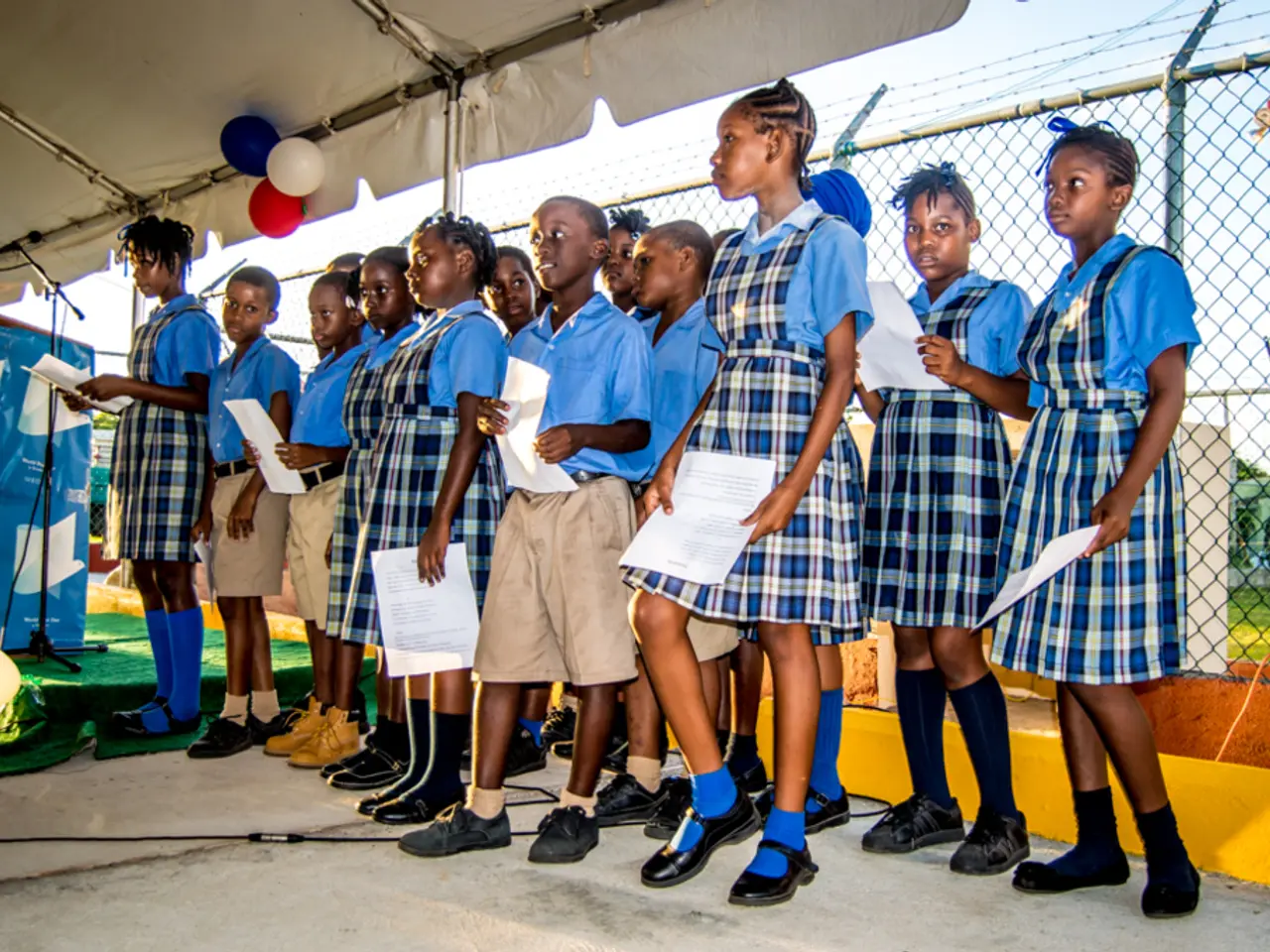Struggling with Heat: Unveiling the Escalating Issue of School Temperatures
In the face of rising temperatures, schools around the world are grappling with the challenges posed by extreme heat. A survey conducted by the University of York is shedding light on this issue in the UK.
Globally, the United Nations Children's Fund (Unicef) estimates that hundreds of millions of schoolchildren missed out on education in 2024 due to heatwaves forcing school closures. This is a concerning trend that is not unique to any one region.
Research indicates that one potential solution, the widespread installation of air-conditioning units, could have significant drawbacks. A study suggests that rolling out more air-conditioning units could increase annual electricity demand by 2% in Europe and a staggering 15% in India. With India alone emitting an extra 120 million tonnes of carbon dioxide, it's clear that more sustainable ways to keep temperatures sufficiently low in schools are urgently needed.
Heat is causing major health consequences, ranging from dehydration and heatstroke to kidney failure. This is particularly true in regions like the Madhesh province in Nepal, where schools have classrooms that are poorly ventilated, overcrowded, and reach dangerously high temperatures, compromising student wellbeing and learning outcomes.
In contrast, the Maldives is planning to install air-conditioning units in all of its 3,704 classrooms by the end of 2025. However, this solution may not be feasible for many low- and middle-income countries, which are the worst hit by heat in classrooms, especially in cities with the urban heat island effect.
Policy changes are necessary to address this issue. In Nepal, a government policy mandates weather monitoring at all local levels, but there are no specific guidelines for maximum classroom temperatures. Kriti Bhuju, an influencing and communication specialist for Mercy Corps Nepal, hopes that survey results can feed into policy, particularly local heat-management plans and heat-resistant infrastructure.
Cities often have higher temperatures than the surrounding countryside due to factors like fewer trees, more concrete and brick buildings, energy use, and the urban heat island (UHI) effect. Disaster management in Nepal focuses on flooding, earthquakes, and landslides rather than slow-onset hazards like heat.
In the US, a report estimates that 41% of public school districts need to replace or update heating, ventilation, and air conditioning (HVAC) systems in at least half their schools. In the UK, schools built decades ago are not equipped to function in present-day climate conditions.
Research suggests that hot classrooms negatively impact the ability to learn more than similarly hot offices do. In the United States, Patricia Fabian at Boston University School of Public Health collected data showing that within a single school building, the difference between the coolest and hottest classrooms could be more than 14C on a hot day.
Various countries are addressing school overheating through measures like restricting outdoor work hours (Italy), closing schools temporarily during extreme heat (France), and adapting curricula and infrastructure to climate change impacts. Additionally, mental health support and climate-adaptive projects such as waste reduction and resource management in schools are promoted to build resilience.
As the world grapples with the effects of climate change, it's clear that the issue of extreme heat in schools is one that requires immediate attention and action.
Read also:
- Peptide YY (PYY): Exploring its Role in Appetite Suppression, Intestinal Health, and Cognitive Links
- Toddler Health: Rotavirus Signs, Origins, and Potential Complications
- Digestive issues and heart discomfort: Root causes and associated health conditions
- House Infernos: Deadly Hazards Surpassing the Flames








